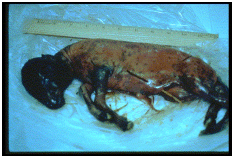Eggs of certain mosquito species, in particular those in the genus Aedes, are naturally infected with the RVF virus (Romoser et al. 2011). During years of excessive rainfall resulting in flooding of dambo habitats, the eggs hatch Aedes mosquitoes which transfer the virus to livestock and wildlife on which they feed. Once livestock are infected and provide a reservoir for virus amplification, other mosquito species and biting insects can spread the disease further to livestock and human populations.
Humans may become infected with RVFV through mosquito bites, contact with blood, body fluids, or organs of infected animals, or ingestion of blood or raw milk. Aerosol infection can occur through contact with laboratory specimens containing the virus, or during the slaughter and processing of the meat of infected livestock. RVFV causes moderate to severe flu-like illness with fever, weakness, back pain, dizziness, vomiting, photophobia, and weight loss in human beings The infection can cause internal hemorrhage (severe bleeding), encephalitis (inflammation of the brain), or severe eye complications such as macular degeneration. Humans at risk include: livestock herdsmen, aerosol infection among laboratory workers, those involved in the care or slaughtering of infected animals, or via accidental inoculation. Continued exposure to diseased animals can result in human RVF epidemics, and humans are capable of producing high virus loads of RVFV sufficient to infect naïve mosquitoes.
In animals, an RVF epizootic is usually first manifested as a wave of unexplained abortion among livestock. The 1950-51 epizootic in Kenya resulted in the death of an estimated 100,000 sheep. RVF is severe in many domesticated animals including sheep, cattle, goats, and camels, though sheep appear to be more susceptible. Exotic breeds recently introduced in an endemic area suffer greater mortality than breeds long adapted to local conditions. Infection with RVFV results in abortion rates close to 100% among pregnant infected ewes, and the disease appears to discriminate by age structure wherein about 90% of lambs infected with RVFV die. In human beings, approximately 1% of those infected with RVFV die of the disease, but more recently mortality has been documented to be as high as 30% during the 2007 epidemic in Sudan (Hassan et al. 2011).




For further information see the CDC Web Page on Viral Hemorrhagic Fevers.











